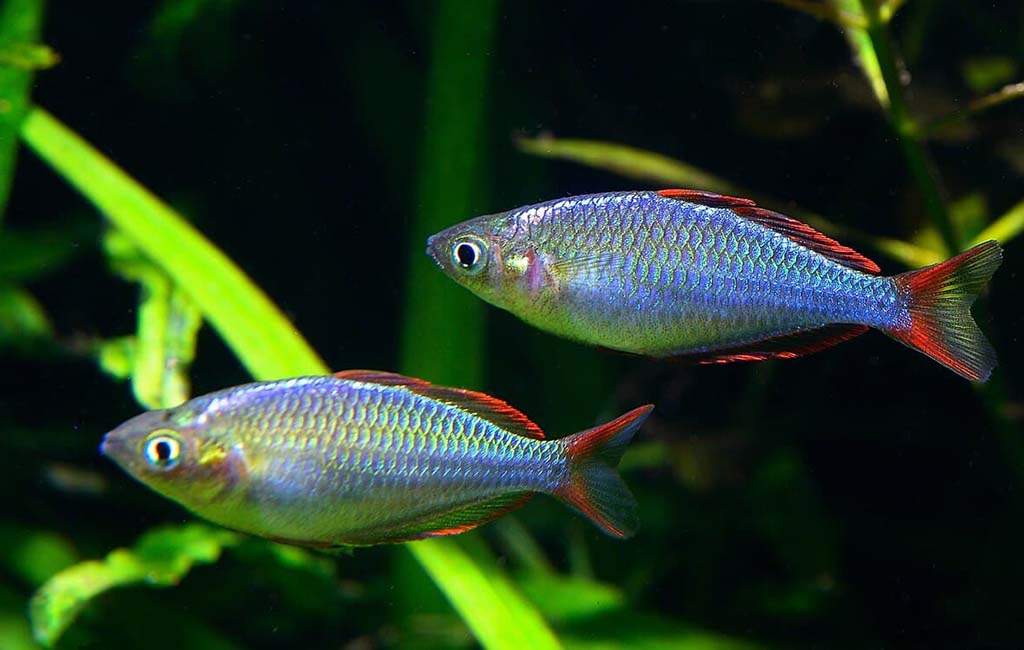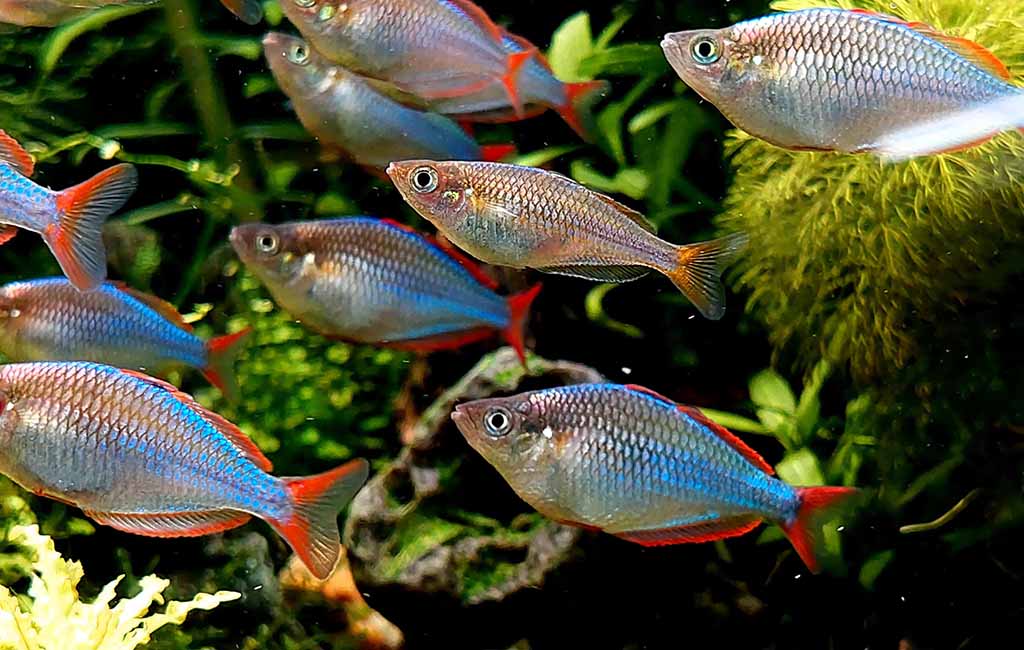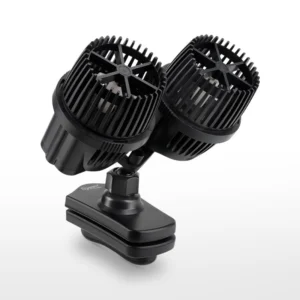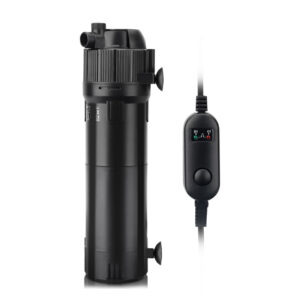Vivid and beautiful, the Rainbow fish are some of the most captivating freshwater fish, appealing to aquarists across the globe. They rank quite high in the community tanks, and that is because of their dazzling, tranquil, and playful nature. In this article, we are going to stock take everything from their schooling behavior, Rainbow fish species, their unique habitat, and the ideal group size – how many rainbow fish are in a tank. Let’s get started with diving into the essentials of keeping the rainbow fish joyful and healthy in your aquarium.
Content Table
Things to Know About Rainbow Fish
Membership to the family Melanotaeniidae is what Rainbow fish are classified under. Its primary location is in Australia, New Guinea, and the surrounding islands. They are peaceful, social fish, existing in freshwater surroundings like lakes, rivers, and wetlands. What sets them apart from other fish is their ability to transmute their hues.
- Habitat: Slow-moving, warm waters are what Rainbow fishes are native to. They thrive in vegetated places in the wild, as it provides ample coverage and food.
- Temperament: These fish carry a non-aggressive demeanor, which makes them suitable to be placed in a community tank. Their active swimming patterns make them playful.
- Peculiarities: The interesting characteristic that the rainbow fish may have is an unusual body type. These are deep-bodied, with a very compressed lateral profile. Another notable characteristic is their enhanced colors in sexual displays or ideal lighting in tanks.
Rainbow Fish Species and Lifespan
There are different Rainbow fish species, each with distinct lengths, colors, and patterns, and can live between 5–8 years depending on the level of care provided.
Some popular species include:
- Boesemani Rainbow fish: They are known for their blue-to-orange gradient color and grow up to 4 inches.
- Neon Rainbow fish: They are smaller species that reach about 2 inches and have glowing silver and blue colors.
- Dwarf Rainbow fish: They are compact, vibrant fish that grow to 2.5 inches and are perfect for smaller tanks.
- Red Rainbow fish: Bright red coloration makes them a standout species, growing up to 6 inches.

how many rainbow fish
Types of Rainbow Fish for Aquariums
Here are the types of rainbow fish that are bred in most home aquariums, with valuable insights into each.
Boesemani Rainbow fish: These are popular for their gleam of blue-orange gradient, although they are generally hardy for intermediate aquarists. Boesemani reach a length of 4 inches and require open swimming space over densely planted areas.
Neon Rainbow fish: Quite small, very striking. Exhibiting iridescent silver and blue colors. They grow just 2 inches in size. They’re perfectly suited for those smaller tanks where a bit of subtle glow needs to be thrown into community aquariums.
Dwarf Rainbow fish: Compact reaching 2.5 inches and vibrant reds and blues will make your peace live in a small group and are the perfect addition for planted nano tanks and kid rainbowfish keeping.
Red Rainbow fish: Their bright red coloration makes them a showstopper in larger tanks. They grow up to 6 inches and need a lot of swimming space, so they should be kept in schools of at least six.
Celebes Rainbow fish: This species is native to Sulawesi and has a very delicate, slender body with translucent fins. They grow to about 3 inches and are best suited for experienced aquarists who can maintain stable water conditions.
Lake Kutubu Rainbow fish: Named after their natural habitat in Papua New Guinea, these fish display pale blue bodies with yellow accents. Growing up to 4 inches, they are ideal for larger community tanks with pristine water.
Threadfin Rainbow fish: These elegant fish have long, flowing fins and a subtle gold or silver body. They grow to about 2 inches and are peaceful but require calm tank mates to avoid stress.
How Many Rainbow Fish in a Tank?
The number of rainbow fish that can be kept together depends on their species and the size of your tank. Rainbow fish are schooling fish, which means they thrive when kept in groups of at least six. A larger school enhances their social behavior and reduces stress.
Here’s a guideline for tank size and group numbers:
- 10-gallon tank: Good for smaller species like Neon Rainbowfish, with up to 6 individuals.
- 20-gallon tank: Suitable for Dwarf Rainbow fish or slightly larger species, keeping 8–10 fish.
- 30–50 gallon tank: Suitable for Boesemani or Red Rainbow fish, and you can comfortably keep 6–8 larger fish.
- 75-gallon tank or larger: It allows you to keep diverse schools of different species, with groups of 10–12 fish.
Tank setup tips
- Ample Swimming Space: Rainbow fish are active swimmers, and there should be plenty of open areas in the tank. Overcrowding causes stress and leads to less activity and fewer healthy fish.
- Natural Habitat Design: Use driftwood or rocks and add Java Fern or Anubias for live plants. They also prefer an area for schooling.
- Substrate and Lighting: Use a dark substrate to enhance their colors and moderate lighting to mimic their natural conditions, promoting vibrant displays and healthy growth.

rainbow fish facts
Facts About Rainbow Fish Schooling
Rainbow fish are very interesting schooling fish with some unique behaviors. Here are some interesting facts about their schooling tendencies:
- Safety in Numbers: In the wild, schooling helps protect Rainbow fish from predators. In aquariums, schooling reduces stress and encourages natural behavior.
- Synchronized Movement: A well-established school moves in unison, creating a mesmerizing display in your tank.
- Dominance Displays: Male Rainbow fish often have brighter colors and indulge in playful sparring to establish hierarchy within the school.
- Compatibility: They are peaceful fish, but may exhibit minor territorial disputes. These are usually harmless and add to their social charm.
Bringing It All Together
Any aquarium enthusiast is surely going to enjoy Rainbow fish. It combines beauty, activity, and low maintenance. As fish, Rainbow fish are vivacious; therefore, it’s essential to maintain them in a group as it is an indicator of their well-being. Their species, habitat, and social behavior will all guide you toward providing an optimal environment for such beautiful fish.
Whether you’re a beginner or an experienced aquarist, Rainbow fish will undoubtedly bring color and life to your aquarium. Remember to choose the right tank size, maintain water quality, and provide a balanced diet for optimal care. With the right setup, your Rainbow fish school will flourish, creating a captivating underwater world.



Leave a comment